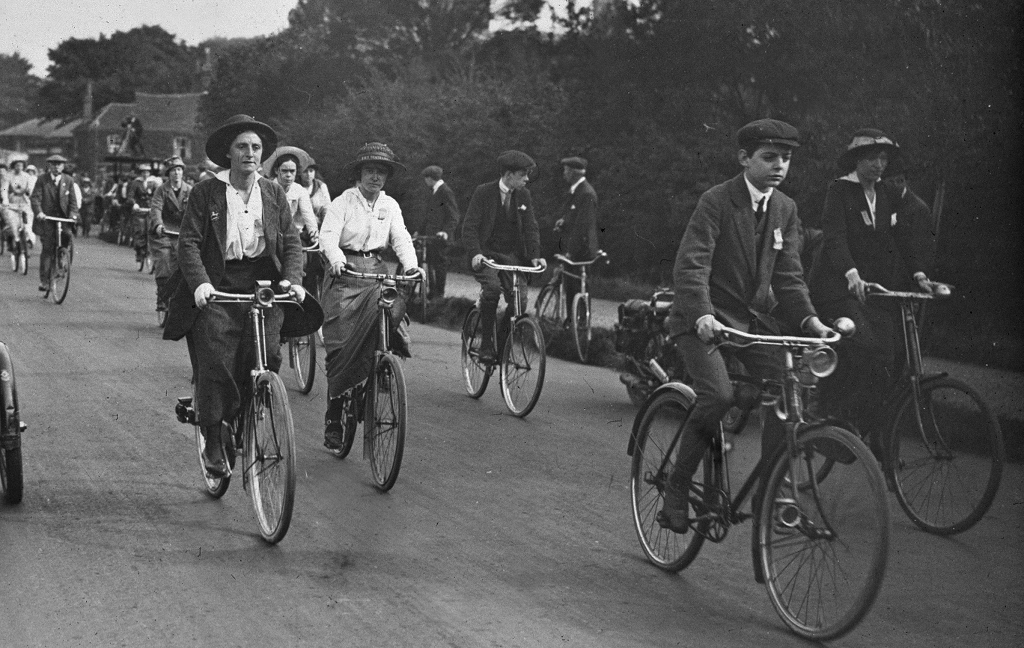Getting out and about on a bike can be great for your wellbeing – but did you know people have been doing this for around 150 years?
We’re wheelin’ in the years with our archives to take a trip down memory (cycle) lane. So, history helmets on! Let’s pedal into the past…
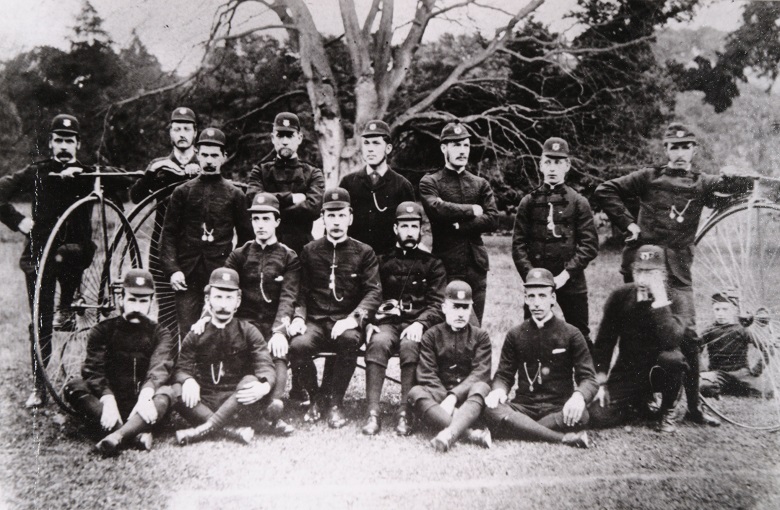
A cycling club in the Borders – possibly Hawick, Jed-Forest or Kelso – photographed in 1878. (© Untraceable; images property of Scottish Borders Council Museum Service. Licensed via Scran) Our cover image was taken at a cycle rally in Falkirk in 1910. (© Falkirk Museums. Licensed via Scran)
A new craze
When thinking about the history of cycling, you may well imagine climbing onto a daunting-looking “ordinary” (or “Penny Farthing”) or wince at the thought of a ride on a “boneshaker”.
Scottish innovators were involved in the development of early bicycles. Kirkpatrick Macmillan, a blacksmith from Dumfries and Galloway, is believed to have invented one of the first pedal driven bicycles as early as 1839. Kilmarnock cartwright and inventor Thomas McCall built two versions of a “velocipede” in the 1860s.
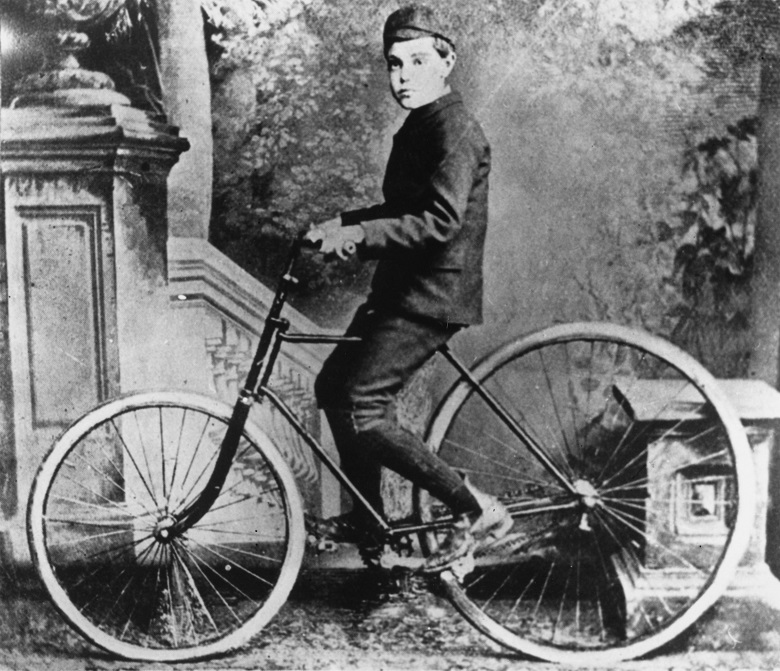
The son of Scottish inventor John Boyd Dunlop on the first bicycle to have pneumatic tyres (© Hulton Getty. Licensed via Scran)
But cycling as a popular pursuit really took off with the development of the “safety bicycle” in the mid-1880s. Similar in appearance to the bikes we use today, they were cheaper, comfier and more reliable than what had come before.
Another pioneering Scot played an instrumental role in ensuring that comfort. After he replaced the solid tyres on his child’s tricycle with an inflated rubber hose, John Boyd Dunlop developed and patented the pneumatic tyre. In 1889, he established a company producing bicycle tyres.
The following year Dunlop learnt that he wasn’t Scotland’s first pneumatic pioneer: Stonehaven’s Robert William Thomson had patented his “Aerial Wheels” several decades earlier, in 1847.
Meanwhile, cycle works sprung up in towns across Scotland as manufacturers sought to capitalise on a craze which would last right up until the rise of the motor car.
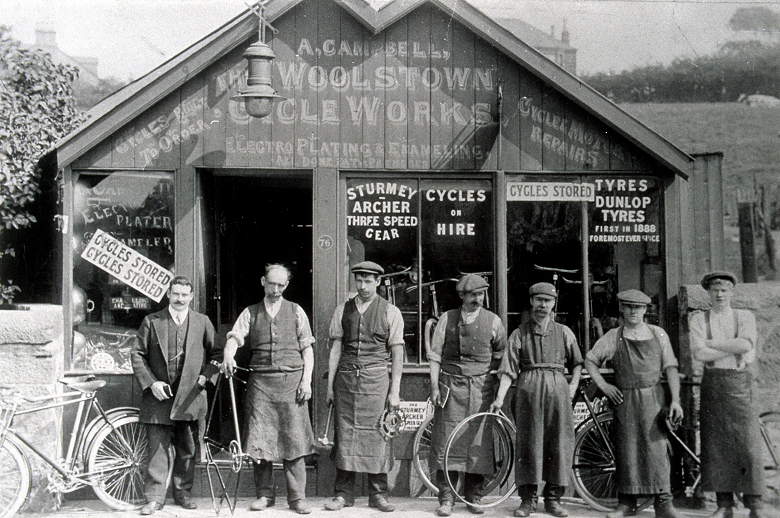
The Woolston Cycle Works in Bathgate, in around 1905. Seven men were employed by owner Andrew Thomson Campbell. As well as repairing bicycles, Campbell’s team made their own, called called “the Woolstown”. (© West Lothian Council Libraries. Licensed via Scran)
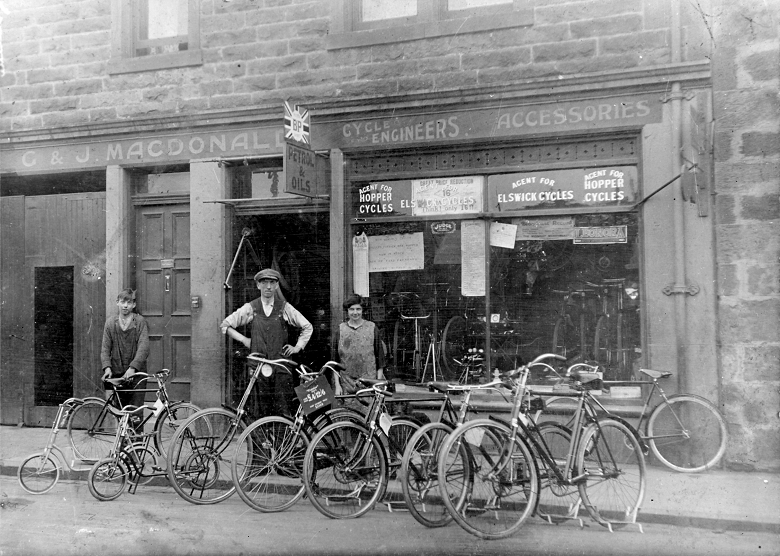
The MacDonald’s of Dalkeith also made their own bicycles in their shop on Buccleuch Street. This photograph is from some time in the 1920s. Mr MacDonald also worked as a part-time postman and is possibly wearing his postman’s hat. (© National Museums Scotland. Licensed via Scran)
Join the club
Many like-minded cyclists organised themselves into clubs, arranging rallies, outings and holidays. There’s a wealth of photos in our archives, showing cycling clubs proudly posing with their bikes.
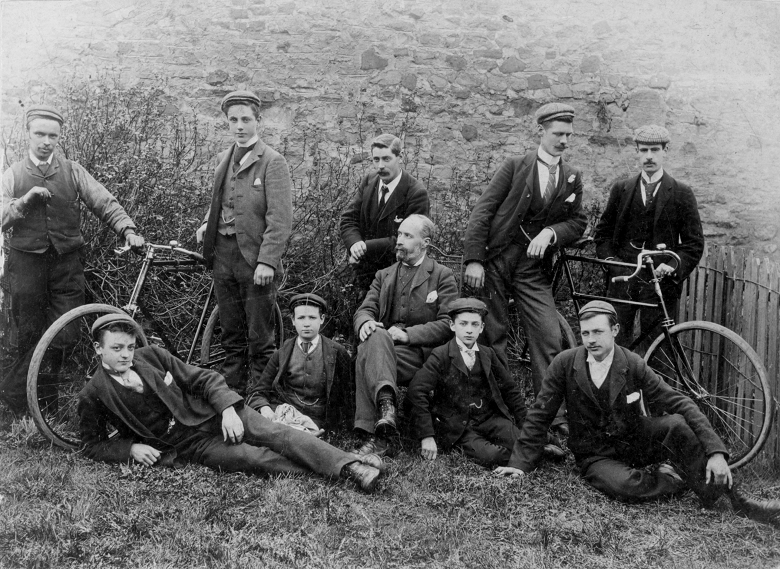
Members of the Cupar Cycling Club in Fife pose for a photograph in the early 1900s. (© National Museums Scotland. Licensed via Scran)
While some show groups, like the Cupar Cycling Club, that are clearly quite well-off, from the late-1800s onwards we can see more working people jumping into the saddle.
The boom in the production of safety bicycles came at a time when working people were beginning to enjoy more leisure time. Not only was a bicycle a useful means of getting to and from work, on days off it was a source of excitement and adventure.
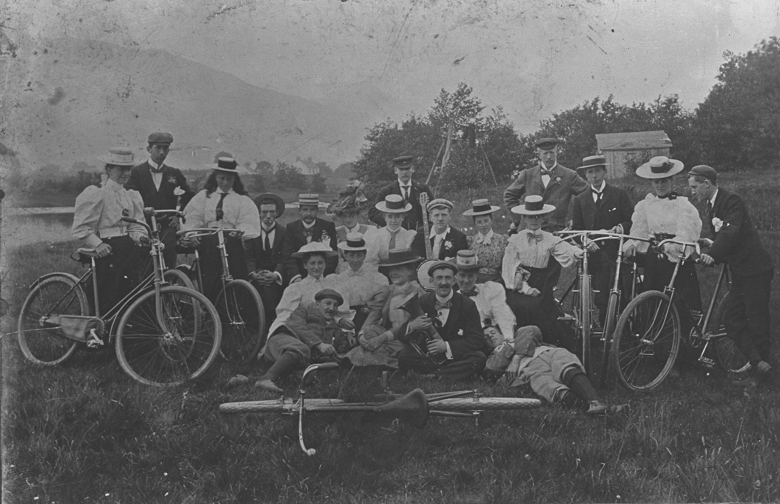
The Stepps Cycling Club on an outing to the Campsie Fells in about 1900. The club was one of several local organisations formed as a community began to grow around Glasgow’s first suburban railway station. (© East Dunbartonshire Council. Licensed via Scran)
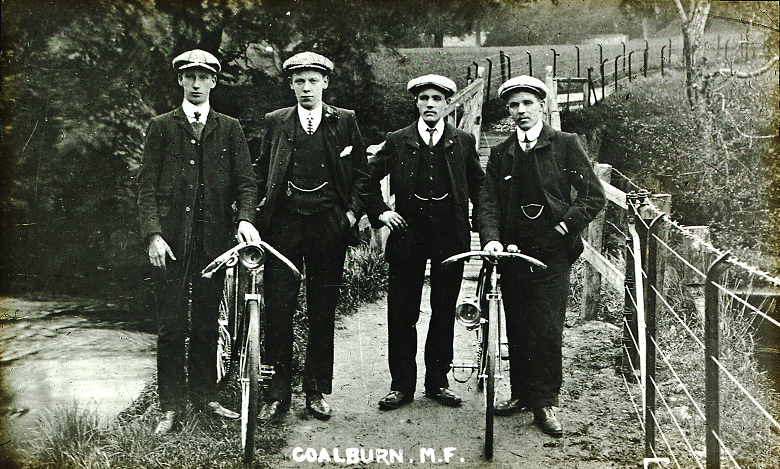
John Hamilton, David Craig, Robert Shaw and John Shaw of the Coalburn May Fair Cycling Club pose with their bicycles around 1900. This was the Lanarkshire village’s first cycling club. (© South Lanarkshire Libraries. Licensed via Scran)
Pedals and politics
In 1894, the foundation of the Clarion Cycling Club added a political element. It used cycling to promote socialist propaganda and by its peak in the 1930s had 233 branches and over 8,000 members, including a number in Scotland.
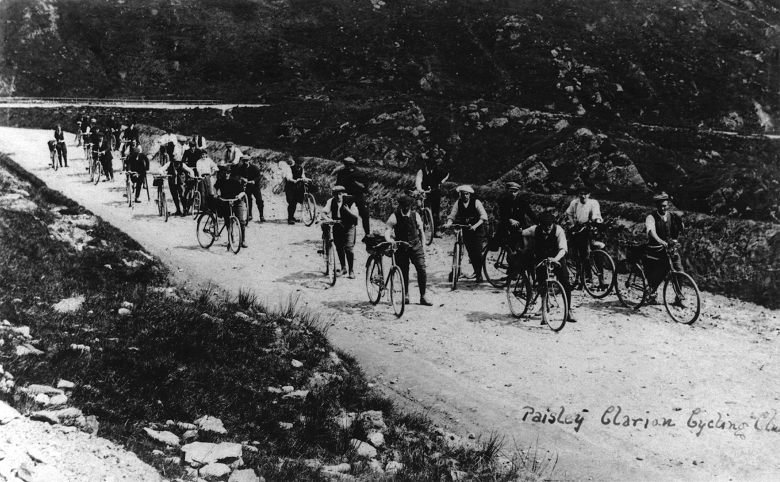
The Paisley Clarion Cycle Club embarking on a journey in 1909 (© Paisley Museum & Art Galleries, Renfrewshire Council. Licensed via Scran)
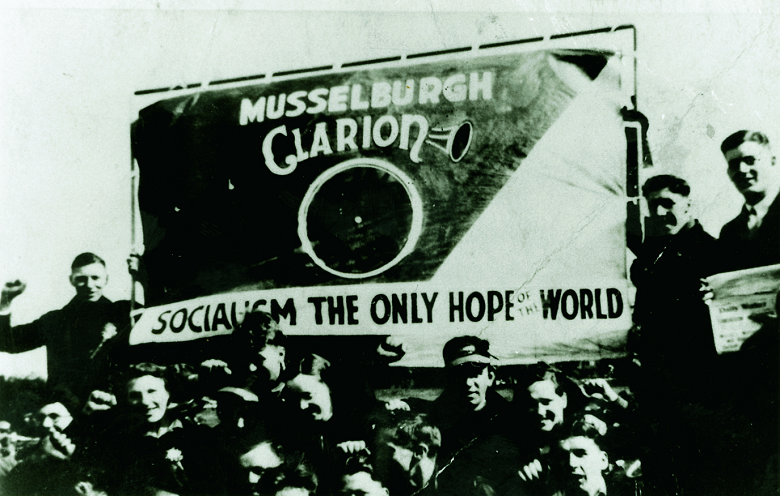
The Musselburgh Clarion Cycling Club members parading under their banner at the Honest Lad and Lass Parade in 1938. The Musselburgh section of the Clarion Club was founded in 1930. (© The City of Edinburgh Council. Licensed via Scran).
A win for women
While many of the earliest cycling clubs were organised by men for men, the bicycle craze of the 1890s had a huge impact on the lives of women.
A version of the safety bicycle with a drop frame was introduced, designed to accommodate ankle length skirts. Modified garments, such as bloomers and bicycle corsets, began to hit the market. Despite resistance to them taking part in an “unsuitable” pursuit wearing “scandalous” outfits, women took to cycling in their thousands.
The result was an unprecedented shift in women’s social mobility and sense of liberty. As well as enabling more independent travel than ever before, the bicycle drove new ideas in politics, fashion and health.
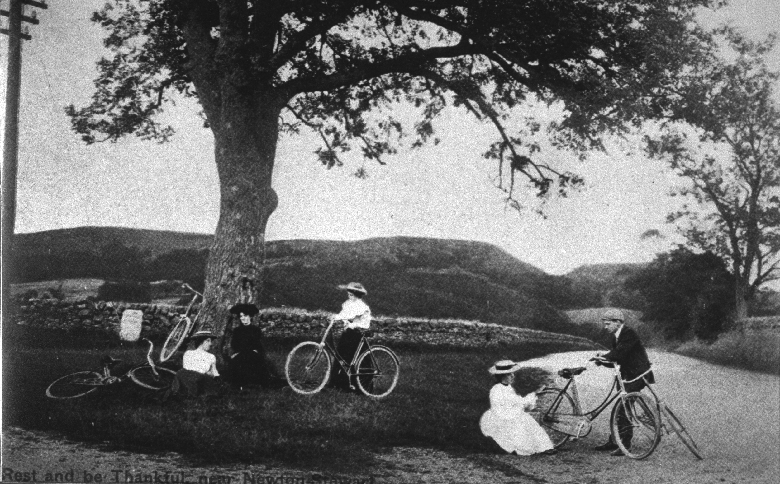
A postcard from 1900 showing a group of cyclists taking a break from their ride near Newton Stewart, Dumfries and Galloway. The drop frames of their safety bikes allowed women to join the cycling craze (© Whithorn Photographic Group. Licensed via Scran)
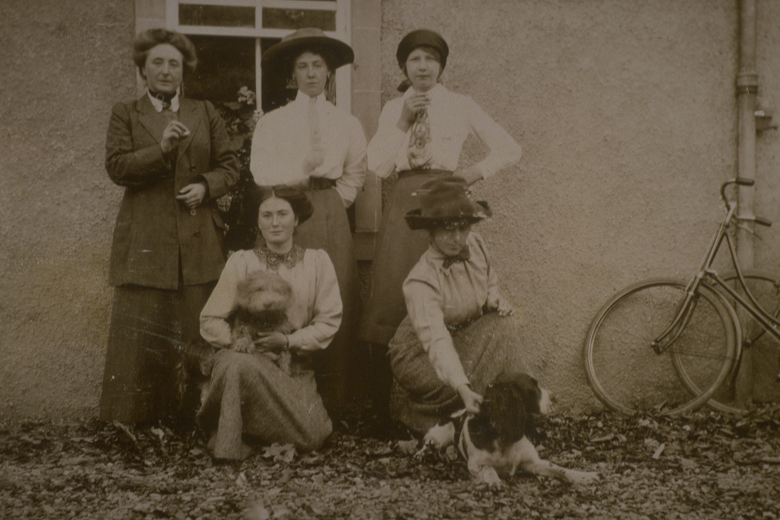
Cyclists pose for a photo at Seacliff, near North Berwick in September 1911. (© Mr RC Lloyd. Licensed via Scran)

Dressmaker and Sunday School teacher, Lizzie Colquhoun with her bicycle in Kilmaurs, Ayrshire, 1910. (© National Museums Scotland. Licensed via Scran)
Ready to race
From the earliest days of cycling, people have felt the urge to race. In the archives, you can find a silver medal presented to a “Penny Farthing” racer in Birnam, Perthshire in 1879. A beautifully engraved Challenge Cup was presented to winners of races organised by the Easter Ross Cycling Club, Tain, through the 1880s.
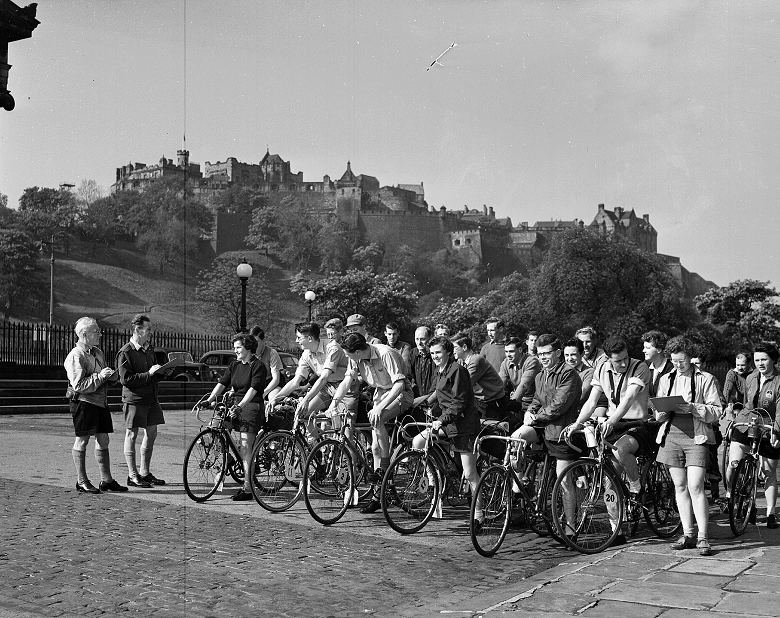
Edinburgh Castle provides a dramatic backdrop as starter and timekeeper check all is in order before a touring group leave the Capital, on 1 June 1954. (© The Scotsman Publications Ltd. Licensed via Scran)
Multi-stage races in Britain began in earnest with the Victory Cycling Marathon, held to celebrate the end of the war in 1945. Subsequent events were known as “Milk Races”, thanks to sponsorship from Milk Marketing Boards. There were several Scottish Milk Races, where the mountains (and no doubt the weather!) presented a great challenge for riders.

Norman Batty ascends the String Road on the Isle of Arran on his way to winning a stage of the 1961 “Milk for Energy Race” (© The Scotsman Publications Ltd. Licensed via Scran)
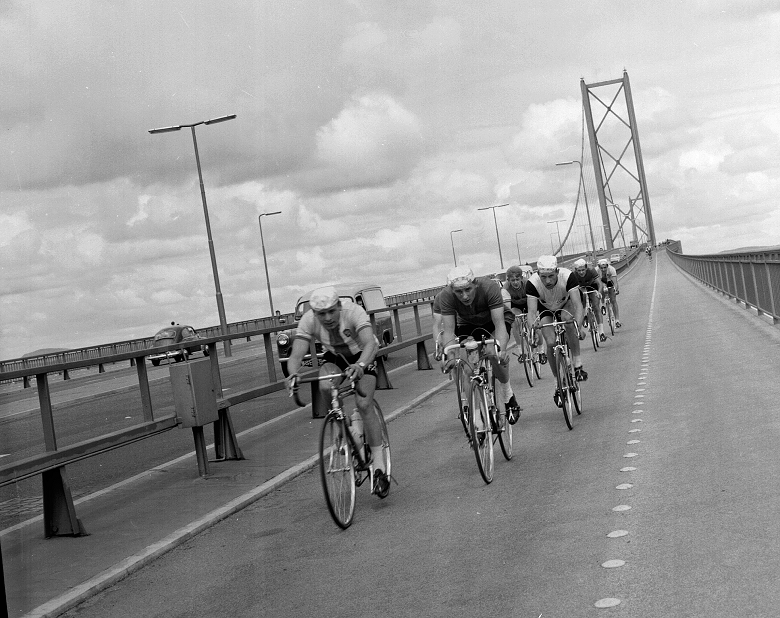
The “Milk for Energy” race crosses the Forth Road Bridge in July 1961 (© The Scotsman Publications Ltd. Licensed vis Scran)
The need for speed
In the city, an altogether different type of racing grew in popularity in the post-war years: cycle speedway. Inspired by motorcycle speedway, this frantic and intense racing takes place on short oval dirt tracks. Many were built on bombsites, offering young people a cheap form of leisure in war-damaged cities.
While London led the way, records show Glasgow was home to one of the first cycle speedway leagues, formed in 1946. Web archives recall many teams which once raced in and around Edinburgh: Liberton Lions, Granton Griffins, Brunstane Bees, Portobello Eagles…
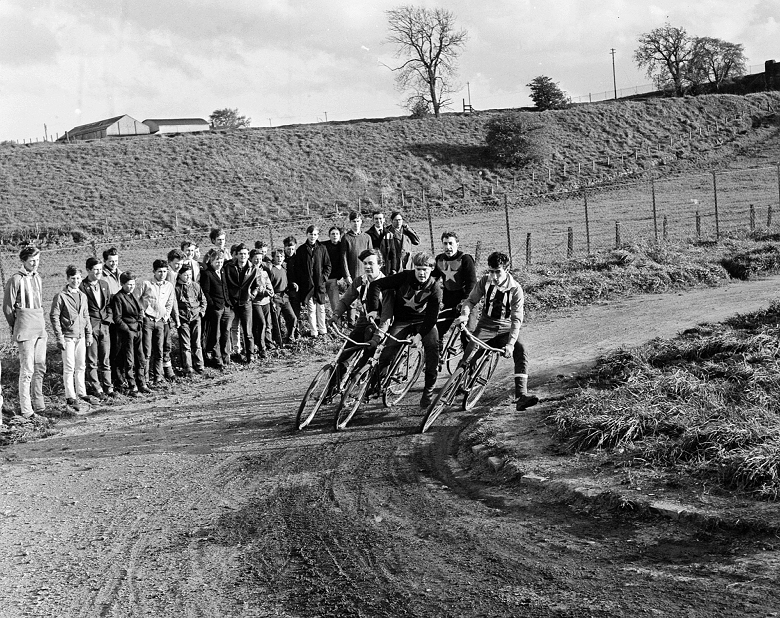
The Sighthill Hammers take on the Meadowbank Stars in a cycle speedway race in May 1960 (© The Scotsman Publications Ltd. Licensed via Scran)
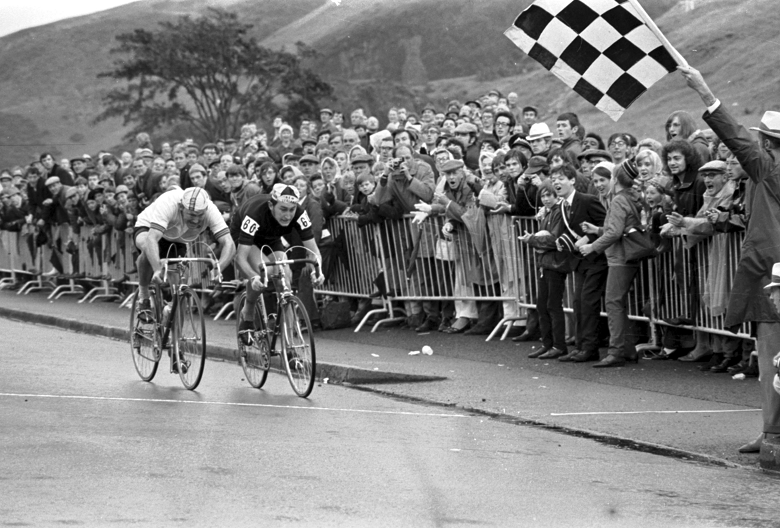
Bruce Biddle of New Zealand narrowly beats Ray Bilney of Australia to the finish line of the cycling road race during the 1970 Commonwealth Games in Holyrood Park, Edinburgh. The park will host the start of the road races in the 2023 UCI Cycling World Championships. (© The Scotsman Publications Ltd. Licensed via Scran)
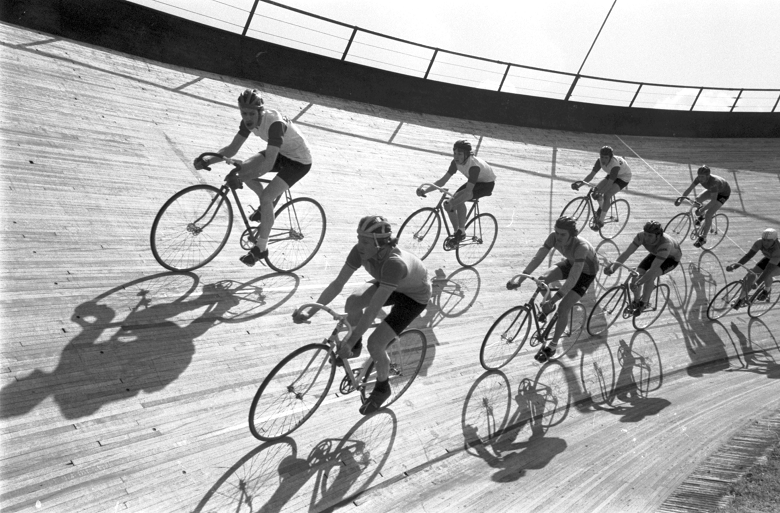
Cyclists on the velodrome track at Meadowbank Stadium in Edinburgh, May 1981. (© The Scotsman Publications Ltd. Licensed via Scran)
See more in our archives
For even more archives, check out our other archives blogs, or pay a visit to our online exhibitions, covering everything from historic shops to Sir Walter Scott.
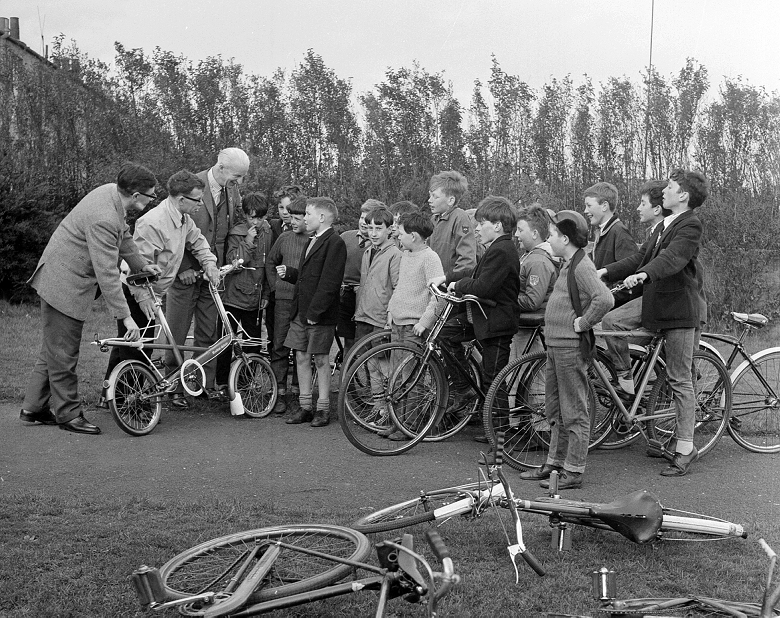
Cycling Proficiency Tests at Saughtonhall Community Centre in Edinburgh, 1960. (© The Scotsman Publications Ltd. Licensed via Scran)

